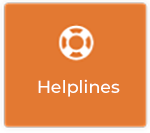UP2US Lesson 4: Who’s involved?

This lesson examines the roles of the different people involved in bullying and how bystanders can be encouraged to intervene. If the class has received the Connect with Respect lesson as part of the Garda Schools Programme, it might not be necessary to complete all of the activities in this lesson. The Connect with Respect lesson explores the roles of the different people involved in bullying in considerable depth.
- +Curriculum Links
- Junior Cycle SPHE Short Course Strand 3:
Anti-bullying: Examine the roles of the participants and bystanders in incidents of bullying.
Additional learning outcomes:
Strand 1: My rights and the rights of others. Debate issues about their personal and social rights, including the right to feel safe, as they apply themselves and others; discuss the importance of respectful and inclusive behaviour in promoting an environment free from bias and discrimination. - +Resources and Methodologies
- Resources: Lets Fight It Together video, Likes and Dislikes poster, Copies of Agony Aunt-i letters (Worksheet 4.1).
- Methodologies: Video analysis, Graphing, Pairs work/whole-class discussion, Display board/poster creation
- +Learning Outcomes
- Learning outcomes:
Students will have empathised with the different parties involved in incidents of bullying.
Students will have written responses on how different people should seek help and stop bullying.
Students will be able to describe the procedures that should be followed by bystanders to put a stop to bullying.
Students will have the confidence to intervene and will know how to get help when they encounter incidences of bullying. - +Key Skills
- Managing myself, Staying well, Communicating, Being creative, Working with others, Managing information and thinking, Literacy
- +Teachers' Note
- Activity 4.2: It is important that the teacher discusses the pupils’ responses with them so that aggressive or ineffective responses are ruled out. All responses should outline intervention strategies and should highlight who the protagonists should turn to for help. Here are some important points for the teacher to stress with regard to bystanders looking to intervene.
It is important that the safety of the bystander is always considered. Bystanders should never be put in a position where they are in danger of being the subject of physical abuse or aggression.
It’s also important that bystanders are strong, assertive and positive in intervening in bullying situations and that they don’t respond to the bullying in an aggressive way that could itself be considered bullying. - +Activity 4.1 - The bullying chain (15 minutes)
- STEP 1: Have the students think back to the video about Joe, shown in the first class.
STEP 2: Using that video, or their own experiences of bullying, as a source of information, have the students think about and then answer the following questions. It might be useful for students to refer to Worksheet 1.1.
Q.1 Who tried to intervene or offered help when Joe was being bullied?
Suggested answer: Joe’s mother was concerned as soon as she noticed a change in his behaviour. Although she voiced her concern early on, Joe initially withdrew. It was not until Joe’s mother found his video diary that she truly understood what was going on and took action to resolve the bullying situation, by talking openly with Joe and by going to the school principal for help. A teacher in Joe’s school also noticed that Joe was upset in the school yard and tried to talk to him to find out what was wrong. Again, this teacher was limited in how she could help Joe when he seemed to say to her that he was fine and wanted to be left alone.
Q.2 Who could have helped Joe but didn’t?
Suggested answer: There were a number of people who could have helped Joe but didn’t. Any of his former friends who witnessed Kim’s bullying of Joe could have stood up for him and offered support through solidarity with him. Anyone who saw the bullying website could have reported it, either online or to a responsible adult. His could have been done in a discreet and anonymous way to protect the person who reported the bullying from being bullied. The other students on the bus could have helped Joe by either reporting the bullying to a responsible adult or to a student mentor or simply by reaching out to Joe by talking to him or by sitting with him on the bus. As it was, Joe felt completely alone on the bus and had started to think that everyone hated him.STEP 3: The teacher should then have students consider what they would do if they encountered a road accident on their way to school. Would they drive by or stop and make sure that help was received? What would happen if no one stopped? The same choice occurs when people witness incidents of bullying. At this point the term ‘bystander’ should be introduced to students. Bystanders are people who witness bullying but are not victims or perpetrators of bullying. The bystander effect means that often the more people who see something happen the less likely each individual is to do something about it. Students should then consider the following questions:
Q.1 What might prevent people from intervening in bullying situations?
Suggested answers:- People might be prevented from intervening because they fear being bullied next.
They think they don’t know the full story and so avoid getting involved.
They are threatened when they try to help out.
They don’t know what to do.
They don’t recognise the bullying behaviour.
They want to stay ‘in’ with the popular crowd.
They don’t want to take sides.
They are involved in bullying and fear they’d get in trouble if they intervened.
Q.2 How can bystanders get help without exposing themselves?
Suggested answers: Bystanders can help by reporting cyber bullying online. This is usually an anonymous process. Bystanders can also help by telling a student mentor or responsible adult about the bullying incident. The bystander can stress that they would like to remain anonymous to prevent the bullies from targeting them next. The bystander can help improve the situation by reaching out and supporting the person who is being bullied. Speaking up in a calm supportive way but not retaliating online will let the bullies know that their behaviour is being noted and that it is not condoned. Privately supporting the person who is bullied might give this person the courage to seek help.Q.3 How do people who bully benefit when someone acts as a positive bystander?
Suggested answers: These people benefit when someone acts as a positive bystander as bystander interventions help bring problems to the surface and lead to positive resolutions. Often times the reason why people bully is that they are experiencing difficulties themselves. When a bystander intervenes, this can result in the person who bullies receiving the support they need. Bystander interventions also help bring an end to conflict that might actually have been distressing the person who bullies. - People might be prevented from intervening because they fear being bullied next.
- +Activity 4.2 - Agony Aunt-i Bullying
- STEP 1: The class should now be split into pairs and each pair should be given a number of Agony Aunt-i letters (see Worksheet 4.1). It might also be useful to distribute the list of
helping organisations and easy bystander actions included in Appendices 4 and 6. These letters include notes written from the perspectives of the bullied, the bully and a number of different bystanders - STEP 2: In each case the students should try to provide three short pieces of advice in their responses to the people who wrote the letters. After each pair has responded to two letters, they should give feedback with advice to the larger group.
- STEP 1: The class should now be split into pairs and each pair should be given a number of Agony Aunt-i letters (see Worksheet 4.1). It might also be useful to distribute the list of
- +Activity 4.3 - Bystander dos and don'ts (10 minutes)
- STEP 1: The class should come up with some dos and don’ts for bystanders when intervening in bullying situations. The guidelines produced by the students should be added to the likes and dislikes leaflets.Assessment: The written responses on how to intervene in cases of bullying should allow teachers to assess appropriate student responses to bullying. The opening questions should allow teachers to assess how well students engaged with previous activities and whether students now see stopping bullying as a collective responsibility. The Like/Dislike Leaflet can be used as an assessment artefact. Students may need to complete the design of the leaflet at home.






